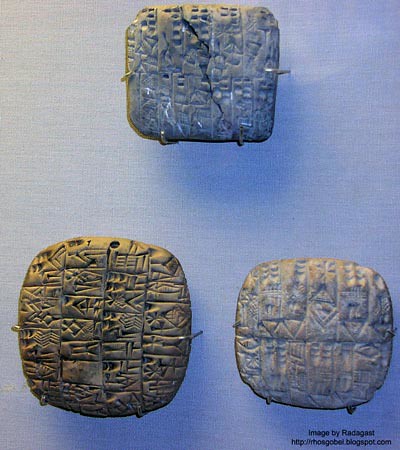
Cuneiform tablets from Ur (top) and "probably Shuruppak" (bottom), dating to 3,000 – 2,650 BC and ~2,500 BC respectively.
Here we have written works dating back well more than 4,000 years, a glimpse into the history of human culture. However, these aren't philosophical works, or records of kings and conquests. They're administrative documents detailing mundane tasks of everyday life, such as the delivery of barley to a temple (top) or the payments owed to and received by a governor (lower left).
There were, however, some grand stories included on some of their cuneiform tablets. Take, for instance, this one:
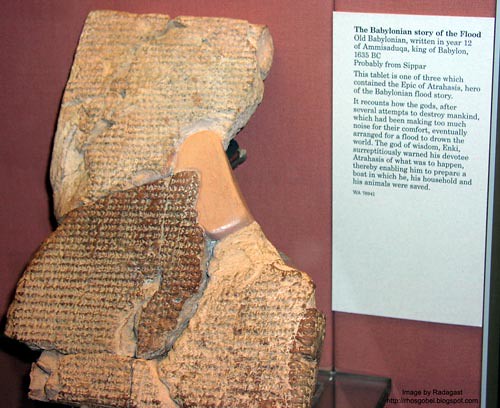
The Babylonian story of the flood, written in 1,635 BC.
For those who have trouble seeing it, here's the full legend:
"This tablet is one of three which contained the Epic of Atrahasis, hero of the Babylonian flood story.Sound familiar?
"It recounts how the gods, after several attempts to destroy mankind, which had been making too much noise for their comfort, eventually arranged for a flood to drown the world. The god of wisdom, Enki, surreptitiously warned his devotee Atrahasis of what was to happen, thereby enabling him to prepare a boat in which he, his household and his animals were saved."
They also had early biological models:
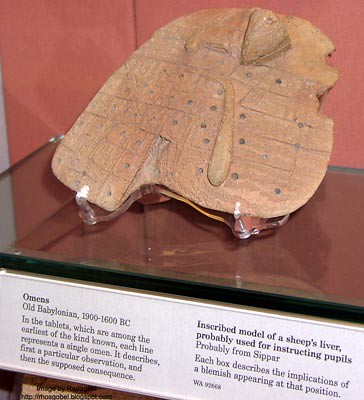
Clay model of a sheep's liver
If this weren't made out of clay, and around 4,000 years old, I could easily see this as an old specimen from a zoology or A&P lab. However, instead of using this model to teach about the biology of the liver, the Babylonians were using the model to teach students to read omens. From what I can tell, each part of the liver has been labeled with the omen of what will happen when a blemish is found in that location. I'm glad biology has advanced past the omen stage.
There were also tablets detailing astronomical findings:
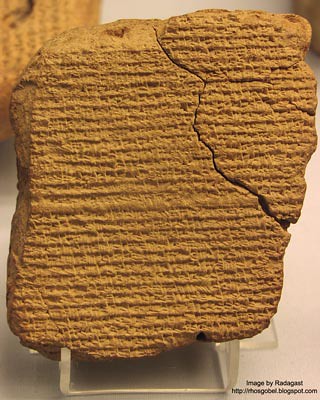
Babylonian record of the observation of Haley's Comet in 164BC.
This was virtually the last exhibit we saw at the British Museum; the guards had started shooing us out of the building, and as we were quickly walking through a section my SO spotted this tablet in the corner of a much larger display case. The museum has dated this clay tablet to September 22-28, 164BC; apparently Babylonian observatories kept detailed astronomical records dating back to the 7th century BC. This tablet recording Haley's Comet would have been my favorite find at the museum, if not for the one pictured below:
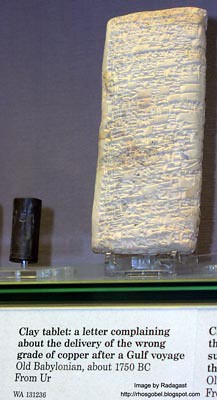
Clay tablet containing "a letter complaining about the delivery of the wrong grade of copper after a Gulf voyage." The tablet was written ~1,750 BC.
I can easily imagine the Babylonian who wrote this angrily stamping the clay, completely pissed off that he's received the wrong item.
It's amazing how little people have changed over the past 4,000 years.



No comments:
Post a Comment